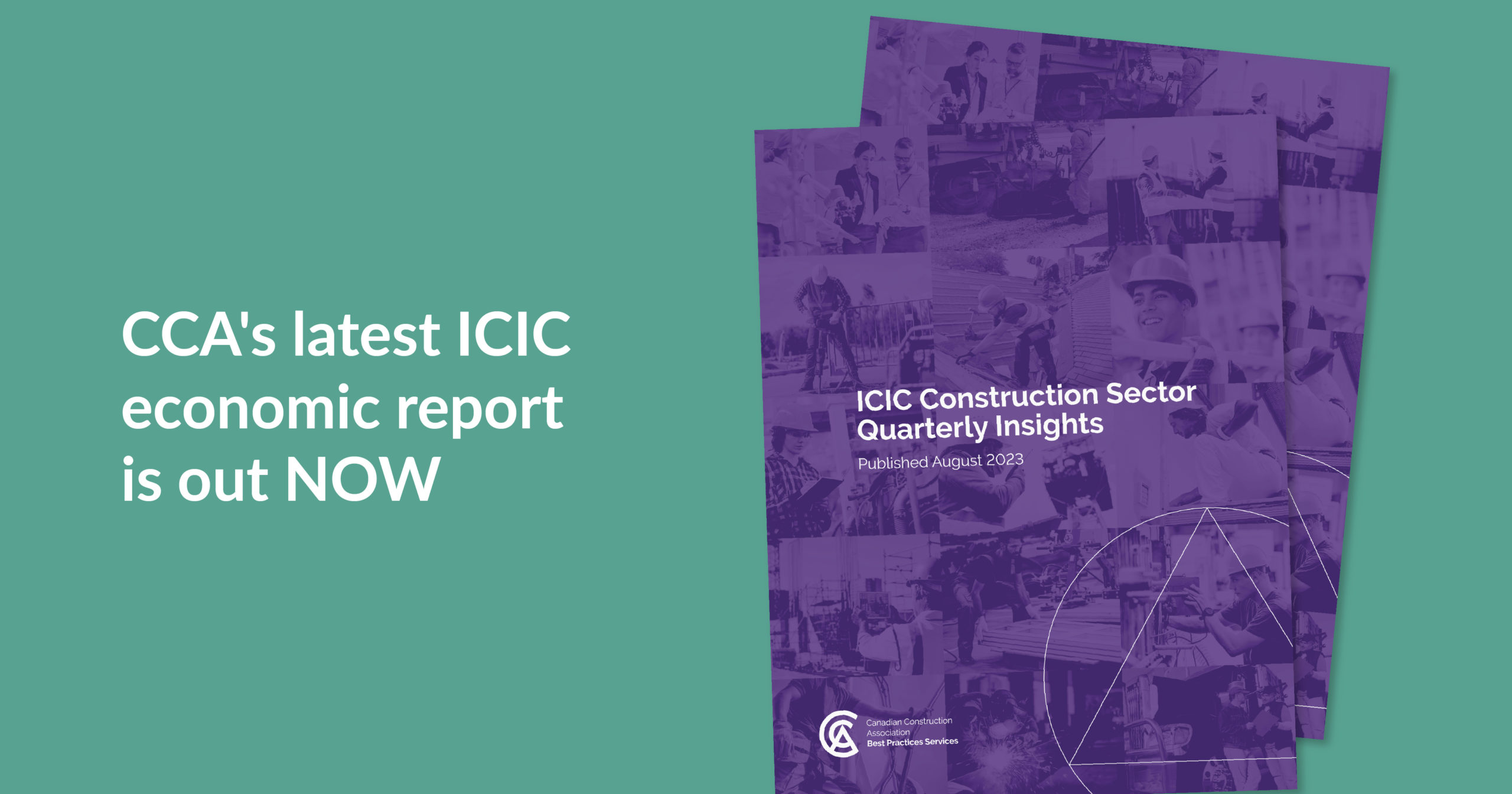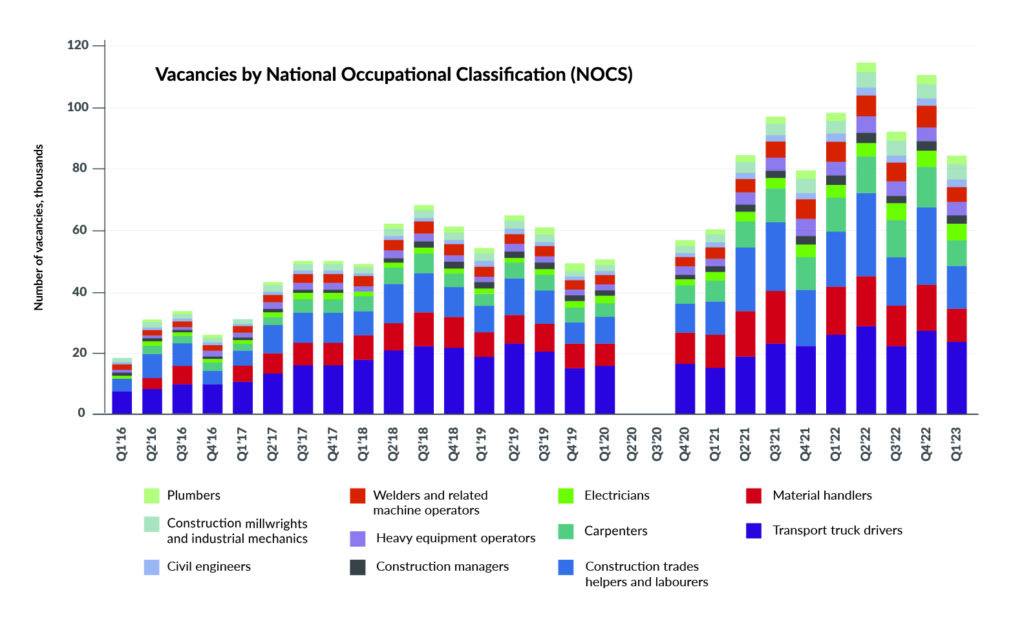
Industry still looking to fill jobs despite signs of tight labour market easing
While inflation and workforce shortages continue to pose challenges across all sectors, the industrial, commercial, institutional, and civil (ICIC) construction industry emerged as a positive force for Canada’s economy in 2022 and continues to show signs of growth in 2023.
These gains could not be achieved without the essential contributions of its labour force, particularly eleven key occupations crucial to its operations. Although labour market tightness began easing in Q2, the current and expected demand for construction and projected future retirements continue to threaten the sustainability of the industry’s workforce.
CCA’s most recent edition of ICIC Construction Quarterly Insights reports that Canada’s GDP rose by 0.7 percent in Q1 2023, with the construction industry following suit with a 0.25 per cent increase during the same period. The residential sector experienced a decline of four per cent, which the ICIC sector helped offset through a 4.3 per cent rise in engineering and heavy construction activity.
While labour force gains have been made in 2023, the industry remains concerned about projected retirements and an ongoing skills shortage that will result in over 300,000 jobs needing to be filled by 2028. With experienced workers continuing to leave the workforce, there remains a need to attract and retain skilled individuals to not only meet current building demands but also future infrastructure needs.
While the second quarter of 2023 showed a small growth in unemployment, vacancies remain high by historical standards. The eleven most employed occupations related to construction make up 61.3 per cent of all open jobs in the industry. The federal government has taken note of our calls to action to address the projected labour shortages in the trades and has launched an Express Entry program to welcome immigrants with work experience to fill occupational vacancies that are at risk.
However, it is important to highlight that only six out of the 11 most employed occupations were included in this program. This narrow selection raises concerns about the need for a more strategic approach to tackle labour shortages in critical occupations. While the government’s immigration initiative demonstrates their recognition of the industry’s challenges, we are calling for additional comprehensive measures to ensure the long-term sustainability and growth of the ICIC construction workforce.

For more information on this report or the work CCA is currently focused on to address the issues covered, please email Louis-Philippe Champagne, Director of Government Relations and Policy, or Mario Baker, Assistant Manager of Economics and Policy Development.
Related
Construction activity remains strong despite challenges faced by the industry
Labour shortage hampering construction industry’s ability to drive even greater growth for Canada
Labour shortages lead discussions during CCA’s annual Hill Day

